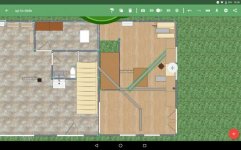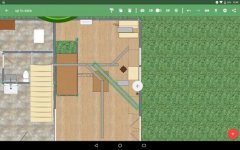Mike D,
From what I have read having a length of uninterrupted straight pipe going directly into the cyclone helps smooth the air entering the cyclone which is a good thing. If I recall, the minimum length is 5’ although I may be mistaken as to the minimum length. As to overall length, every foot of pipe and every turn in the pipe adds static pressure to the system and thereby reduces air flow. Once the minimum length of straight pipe into the cyclone is achieved, then a layout that minimizes the length of each leg of pipe with the fewest turns back to the cyclone should optimize performance. My reference book states that adding a single 45 degree elbow is equivalent to adding 6’ of 6” diameter pipe; 12’ of 6” diameter pipe if a 90 degree elbow.
Sketch 1 would be my preference. Sketch 1 seems to use less material, reduce ceiling objections, and minimizes turns back to the cyclone.
Sketch 2 introduces a 90 degree turn on the way back to the cyclone from the drill press by the introduction of a second 45 degree elbow. The added 45 degree elbow would increase cost and static pressure. Sketch 2 also shortens the length of uninterrupted pipe entering the cyclone.
If you think you may ever add additional tools such as a planer, jointer, drum sander, band saw, lathe, down-draft sanding table, or some other tool, adding wyes that are capped in appropriate locations would make adding additional duct work easier when the time comes.
I saw no difference between sketch 1 and sketch 3.



